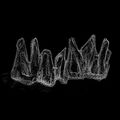Template:Selected anniversaries/November 29: Difference between revisions
No edit summary |
No edit summary |
||
| Line 9: | Line 9: | ||
File:Laurentius Paulinus Gothius.jpg|link=Laurentius Paulinus Gothus (nonfiction)|1646: Theologian, astronomer, astrologer, and Archbishop of Uppsala [[Laurentius Paulinus Gothus (nonfiction)|Laurentius Paulinus Gothus]] dies. He wrote numerous theological and astronomical works, and also published calendars. | File:Laurentius Paulinus Gothius.jpg|link=Laurentius Paulinus Gothus (nonfiction)|1646: Theologian, astronomer, astrologer, and Archbishop of Uppsala [[Laurentius Paulinus Gothus (nonfiction)|Laurentius Paulinus Gothus]] dies. He wrote numerous theological and astronomical works, and also published calendars. | ||
||1694: Marcello Malpighi dies ... physician and biologist ... the "Father of microscopical anatomy, histology, physiology and embryology". Pic. | ||1694: Marcello Malpighi dies ... physician and biologist ... the "Father of microscopical anatomy, histology, physiology and embryology". Pic. | ||
| Line 27: | Line 25: | ||
||1847: Alfred George Greenhill born ... mathematician. He he will be one of the world's leading experts on applications of elliptic integrals in electromagnetic theory. Pic: https://fr.wikipedia.org/wiki/Alfred_George_Greenhill | ||1847: Alfred George Greenhill born ... mathematician. He he will be one of the world's leading experts on applications of elliptic integrals in electromagnetic theory. Pic: https://fr.wikipedia.org/wiki/Alfred_George_Greenhill | ||
||1859: Jérôme Franel born ... mathematician who specialized in analytic number theory. He is mainly known through a 1924 paper, in which he establishes the equivalence of the Riemann hypothesis to a statement on the size of the discrepancy in the Farey sequences. Pic. | ||1859: Jérôme Franel born ... mathematician who specialized in analytic number theory. He is mainly known through a 1924 paper, in which he establishes the equivalence of the Riemann hypothesis to a statement on the size of the discrepancy in the Farey sequences. Pic. | ||
| Line 39: | Line 35: | ||
File:Thomas Edison.jpg|link=Thomas Edison (nonfiction)|1877: [[Thomas Edison (nonfiction)|Thomas Edison]] demonstrates his phonograph for the first time. | File:Thomas Edison.jpg|link=Thomas Edison (nonfiction)|1877: [[Thomas Edison (nonfiction)|Thomas Edison]] demonstrates his phonograph for the first time. | ||
||1879: Nikolay Mitrofanovich Krylov born ... mathematician known for works on interpolation, non-linear mechanics, and numerical methods for solving equations of mathematical physics. Pic. | ||1879: Nikolay Mitrofanovich Krylov born ... mathematician known for works on interpolation, non-linear mechanics, and numerical methods for solving equations of mathematical physics. Pic. | ||
| Line 86: | Line 80: | ||
File:Maurice Vincent Wilkes.jpg|link=Maurice Wilkes (nonfiction)|2010: Computer scientist and physicist [[Maurice Wilkes (nonfiction)|Maurice Wilkes]] dies. He pioneered several important developments in computing, including microcode, symbolic labels, macros, subroutine libraries, and timesharing. | File:Maurice Vincent Wilkes.jpg|link=Maurice Wilkes (nonfiction)|2010: Computer scientist and physicist [[Maurice Wilkes (nonfiction)|Maurice Wilkes]] dies. He pioneered several important developments in computing, including microcode, symbolic labels, macros, subroutine libraries, and timesharing. | ||
</gallery> | </gallery> | ||
Revision as of 16:44, 7 February 2022
1590: Philologist, mathematician, astronomer, and poet Philipp Nicodemus Frischlin dies, killed by a fall in attempting to let himself down from the window of his cell. His prolific and versatile genius produced a great variety of works, but his reckless life and libelous letters led to imprisonment.
1646: Theologian, astronomer, astrologer, and Archbishop of Uppsala Laurentius Paulinus Gothus dies. He wrote numerous theological and astronomical works, and also published calendars.
1694: Physician and biologist Marcello Malpighi dies. Malpighi made pioneering contributions to anatomy, histology, physiology, embryology, and microscopy.
1759: Mathematician and theorist Nicolaus I Bernoulli dies. He introduced a successful resolution to the St. Petersburg paradox.
1803: Physicist and mathematician Christian Doppler born. Doppler will propose the principle (now known as the Doppler effect) that the observed frequency of a wave depends on the relative speed of the source and the observer. He will use this concept to explain the color of binary stars.
1877: Thomas Edison demonstrates his phonograph for the first time.
1904: In a tour-de-force demonstration of thermionic diode technology, engineer and inventor John Ambrose Fleming delivers a lecture from within an experimental Fleming valve.
1918: Writer Madeleine L'Engle born. She will write the Newbery Medal-winning A Wrinkle in Time and its sequels.
1924: Composer Giacomo Puccini dies. He is remembered as "the greatest composer of Italian opera after Verdi".
1955: The EBR-1 in Arco, Idaho suffers a partial meltdown during a coolant flow test.
1964: Debut of The Man From K.E.S.S.E.L., an American science fiction buddy television series about a pair of space pilots (Robert Vaughn and David McCallum) who work for K.E.S.S.E.L., a secret interplanetary smuggling ring.
2009: Signed first edition of Mountains stolen from the Louvre in a broad-daylight robbery by criminal mathematical functions generated by the Forbidden Ratio gang.
2010: Computer scientist and physicist Maurice Wilkes dies. He pioneered several important developments in computing, including microcode, symbolic labels, macros, subroutine libraries, and timesharing.












